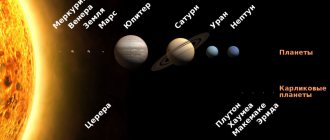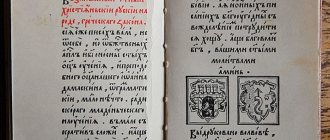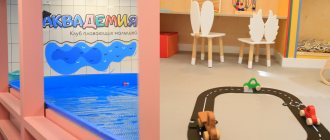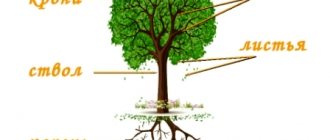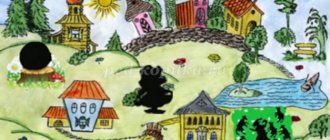Founding of the capital
Moscow is a huge, beautiful city with a special atmosphere, a unique past and centuries-old traditions. Every day a large number of people from different cities and countries come to it to study and work, as well as to see the sights.
Today Moscow is the capital of Russia. It was first mentioned in 1147 as the village of Moscow. According to ancient chronicles, Grand Duke Yuri Dolgoruky ordered the small settlement, which was located on a hill where two rivers - the Moscow River and Neglinka - merged, to be surrounded by a high wooden wall (city). He surrounded the wall with a deep ditch and nicknamed this place Moscow City.
The founding of the city had a positive effect on the inhabitants. It was very conveniently located, since major trade routes passed through it. This contributed to the further growth and development of Moscow.
By decision of Prince Ivan Kalita, Moscow became the capital of Rus' in 1328. By this time, the city's territory had become larger and the population had increased significantly.
Prince Dmitry Donskoy ordered the demolition of the old wooden walls and erected new ones made of white stone instead. From that moment on, Moscow began to be called White Stone.
Interesting things about Soviet Moscow
Looking at the Soviet period, you can learn some very interesting facts about Moscow:
- During the existence of the USSR, the city's territory increased more than 5 times.
- Moscow was proclaimed the capital of the Soviet Union in 1922.
- The famous soda from a machine in the capital cost only 1 kopeck, and if with the addition of syrup - 3. Despite the fact that there was an acute shortage in the country, the cups were never stolen, but were rinsed in the fountain and returned to their place.
- The construction of the Moscow metro began in the 30s, although the first projects arose even before the October Revolution. It should be noted that today almost every station has been renamed more than once. At the initial stage of the metro’s existence, there were stops with interesting names: “Kolkhoznaya” (now “Sukharevskaya”), “Mir” (now “Alekseevskaya”).
- New issues of newspapers were published twice a day, and they were immediately delivered to mailboxes. Information about all events could also be obtained from special street stands.
Cultural development of Moscow
Moscow had the status of capital until 1712, after which Peter I assigned it to St. Petersburg. It was returned only after 1917. But during this time Moscow continued to develop in all directions. Moscow State University (MSU) was opened with the direct participation of the great scientist M.V. Lomonosov. Two gymnasiums appeared - one for the children of the nobility, and the second for the children of commoners and merchants.
The War of 1812 brought great grief to the residents of Moscow, when the city was completely destroyed by fire. However, after the victory of the Russian army over Napoleon's army, it was restored. Thus, Moscow again became a cultural and economic center.
Today, part of the ancient city is located in the very center of the capital. It includes historical buildings, estates and other objects. On the territory of the Kremlin there are religious buildings that are known all over the world: the Arkhangelsk, Annunciation and Assumption Cathedrals.
There are more than 60 theaters, about 100 museums, 75 higher educational institutions, and galleries in the metropolis. More than 4,000 libraries operate for Muscovites and guests of the capital, including the famous “Leninka” (Lenin Library).
The Moscow transport system is unique, which includes railway stations, airports, public transport, and the metro. Some metro stations are architectural monuments. The metro continues to develop and opens new stations for passengers every year.
The Moscow government is doing everything possible to ensure a comfortable stay for Muscovites and guests of the capital. The infrastructure is developing and the city is becoming more modern and practical.
Interesting about modern times
What interesting facts about modern Moscow can you tell children?
- The modern business district "Moscow City" emerged only in the early 2000s.
- The Kremlin is the largest European fortress that has survived to this day.
- The Victory Monument is the tallest monument in the capital.
- In 1994, a law was introduced, which is still in force today, prohibiting dogs from barking between 11 pm and 7 am. If the owners do not take care of their pet, they are fined.
- Moscow is home to the largest number of billionaires in the world. New York is in second place for these indicators.
- The tallest television tower in Europe is Ostankino, located in the capital of Russia.
Attractions
Moscow is a huge city and it is impossible to see all the sights in one day. There are a large number of beautiful and significant places in the capital: ancient monuments, museums, parks and beautiful places:
- The main attraction of the capital is Red Square and the Kremlin. The territory of the Moscow Kremlin is surrounded by a high red brick wall and towers. On the largest tower, which is called Spasskaya, there is a clock. Inside there are churches, museums, monuments, as well as buildings where the Russian President and government work. Here is the Tsar Bell and the Tsar Cannon. They have this name because of their huge size.
- An equally significant attraction is the Alexander Garden. It is located next to the Kremlin. This is a very beautiful park, divided into 3 zones. The park has cozy alleys, beautiful lighting and benches for relaxation. Its construction began during the restoration of Moscow after the fire.
- VDNH is a huge exhibition complex. Every tourist who comes to Moscow visits it. There are museums, exhibitions, and various exhibition pavilions on the territory. Cultural and entertainment events are regularly held there. People come here to visit Europe's largest aquarium and center for the study of seas and oceans.
- The Ostankino TV tower has 45 floors. Excursions to it are conducted by experienced guides who tell interesting facts about the history of the creation of this attraction. Inside you can buy drinks and look at Moscow from above. Tourists from all over the world flock here every year.
- The history of the largest department store (GUM) began in the 18th century. At that time, shopping centers opened on Red Square on the site of modern GUM. In Soviet times, this store was considered the most important in the country. Today, famous world brands present their products in GUM.
- Arbat is the central city street. It is she who conveys the entire unique atmosphere of the city. People walk along it, street musicians play instruments and sing, and artists present their work to the public. Many famous people of our country once lived and worked here.
There are many observation platforms in the capital. You need to visit at least one to see Moscow from a bird's eye view. The most popular is Vorobyovy Gory. It is located next to Moscow State University. A visit to this site leaves an indelible impression of viewing the beauty of the city.
Interesting facts about Moscow during World War II
- In 1941, the Kremlin, like many other sights of the capital, was camouflaged. Already on the day war was declared, a Wehrmacht plane appeared over the city. The Germans managed to take many photographs and create an accurate map of the capital of the USSR. This led to an urgent need to change the Kremlin beyond recognition. Whole detachments of artists and architects, led by B. Iofan, were sent here. As a result, at the end of June the Kremlin looked like an ordinary residential area. The golden domes were hidden, the towers were repainted, and models of houses appeared on the square and slopes.
- An important event during the Second World War was the Battle of Moscow. Not only adults, but also schoolchildren need to know interesting facts about the course of military operations. More than 7 million people took part in this battle. This exceeds the number of people involved in the Berlin operation. It is also important to know that the blitzkrieg (the German plan for a rapid offensive and capture of the entire territory of the USSR) was thwarted precisely during the battle for Moscow.
Transport
It is better to explore the center of Moscow on foot, so it is better to choose hotels and apartments closer to its central part. To cover long distances, it is better to use the metro, which is relatively inexpensive and has an extensive network. Moscow public transport also includes trams, trolleybuses, buses and a monorail line.
For navigation, we recommend using the Yandex.Metro or Google Maps smartphone application.
The capital's public transport has a single ticket. Tickets can be purchased at any metro station. The most profitable solution is to use a reloadable Troika smart card, which can also be used in smartphones with NFC.
Many Moscow metro stations are real works of art. The most beautiful of them:
- Circle line - Komsomolskaya, Kyiv, Novoslobodskaya.
- Red line - Kropotkinskaya and Red Gates. Also on this line are the oldest stations, opened in 1936.
- Dark blue line - Kyiv, Arbatskaya, Revolution Square.
- Green line - Mayakovskaya.
Streets of Moscow
Interesting facts about nature and art in Moscow
Parents, when telling interesting facts about Moscow to children, should not miss information about natural resources and cultural development in the city:
- The largest zoo in Russia is located in the capital. It was founded in the 19th century.
- In Moscow you can find a huge number of parks. The Alexander Garden is considered the oldest.
- The Russian State Library, located in Moscow, is second only to the Washington National Library of Congress in its collection of books.
- The oldest clock in the city is the Kremlin chimes.
- There are about five thousand museums in Moscow. But, unfortunately, they most often open their doors to guests of the capital, and not to local residents.
- The oldest city building that has survived to this day is the Assumption Cathedral.
A little about interesting people
Children will be interested to learn about famous people who were born or lived in Moscow:
- Aleksandrov A.V. is a famous composer. Born in Moscow. Known as the author of the USSR anthem.
- Akhmatova A. A. is a famous Russian poetess. She lived in Moscow since 1918. She was closely connected with this city, since her son was in one of the capital’s prisons.
- Bruce Y. V. is the most educated person in the country during the time of Peter I. He was the first to draw up an accurate map of the territory of the Russian Empire.
- Repin I.E. is a famous Russian painter. He moved to the capital at the age of 23.
These and many other people (among them are Paustovsky K. G., Ranevskaya F. G., Nekrasov N. A., Pasternak B. L., Mayakovsky V. V., Mendeleev D. I., Bulgakov M. A. ) created the history of the modern capital of Russia.
Brief history of the Tretyakov Gallery for children
The famous Russian gallery originates from the private collection of merchant Pyotr Mikhailovich Tretyakov. The official date of creation is considered to be 1856. The first exhibition was opened in Zamoskvorechye in 1867 and was called “Moscow City Gallery of Pavel and Sergei Tretyakov.” In 1892, Pavel Tretyakov donated his gallery to the city, although he remained the main manager until the end of his life.
Initially, the exhibitions opened in the Tretyakov house on Lavrushinsky Lane, then there were not enough premises, and other buildings began to be added to the residential buildings specifically for the exhibition. The famous facade based on Vasnetsov’s paintings was built by 1903.
Image of the Tretyakov Gallery by Pavel Corey
After the revolution, the gallery was nationalized. The area of the gallery was constantly increasing due to the addition of neighboring buildings to it. In 1932, the closed Church of St. Nicholas in Tolmachi was taken over by the gallery to store exhibits.
During the Second World War, the exhibits were evacuated to Novosibirsk; the exhibition returned to Moscow only in May 1945.
Modern view of the Tretyakov Gallery
In 1985, the Tretyakov Gallery was merged with the State Art Gallery, and today the State Tretyakov Gallery is a complex consisting of buildings in Lavrushinsky Lane and Krymsky Val, as well as the Church of St. Nicholas in Tolmachi.
Geography and climate
Moscow is located in the center of the European part of Russia between the Oka and Volga rivers on the banks of the river of the same name. The capital of Russia is located on the hilly plain of the East European Platform. The average height above sea level is 186 m. The highest point in Moscow is the Teplostanskaya Upland (255 m).
Moscow River
The city is located on the banks of the Moscow River, which is its main waterway. Within the capital, the following tributaries flow into the Moscow River: Skhodnya, Presnya, Neglinnaya, Yauza, Setun, Kotlovka, Gorodnya and other tributaries. There are also several hundred other bodies of water within the borders of the Russian capital.
Moscow has a temperate continental climate with clearly defined seasons. Summer here is usually relatively warm. Winters are quite cool with frequent thaws. Autumn in Moscow is cool and rainy. Spring is characterized by changeable weather, when warm days alternate with fairly cold ones.
Winter in Moscow
Interestingly, Moscow is one of the greenest cities in Europe. Landscaping makes up more than half of its territory. The capital of Russia has several hundred parks and forests. The largest of them are: Losiny Ostrov National Park, Izmailovsky Park, Timiryazevsky Park, Moskvoretsky Park, Filevsky Park, Tsaritsyno, Kolomenskoye.
Tsar Bell and Tsar Cannon short story for children
The Tsar Bell was preceded by two other bells: the Godunov bell and the bell cast by order of Tsar Alexei Mikhailovich. It is noteworthy that both had a similar fate: they served for almost fifty years, but split due to severe fires.
Tsar Bell in the Kremlin
Anna Ioanovna, in memory of her reign, decided to re-cast the last bell, and by her decree of June 26, 1730, she ordered the old bell to be melted down with the addition of tin and copper. It was assumed that the new bell would weigh about two hundred tons.
The work was undertaken by bell-making masters, father and son Motorina. Due to its large size, they decided to cast the bell directly in the Kremlin, for which they dug a hole ten meters deep in the square and placed a mold inside. The metal had to be melted in four furnaces at once, which were installed next to the pit.
Pit for casting the Tsar Bell
The work on casting the bell did not go smoothly: first, two furnaces broke down in turn, then it turned out that there was not enough tin and copper, therefore, it was necessary to re-order and wait for the delivery of materials. But, despite the difficulties, the bell was cast on November 23, 1735. It was more than six meters in height and 6.6 meters in diameter. For its impressive size it was nicknamed the Tsar Bell.
But the new bell was never destined to ring, since already in the summer of 1737 there was a fire in the Kremlin, as a result of which the stage on which it stood burned out, as a result of which the bell fell into a hole, gave several cracks, and an eight-ton piece broke off from it . Repeated attempts to raise it after the fire were unsuccessful, and the Tsar Bell lay in the ground for almost a hundred years.
Raising of the Tsar Bell
Only in 1836, the Tsar Bell was installed on a pedestal by the French engineer Montferrand according to the design of the architect Mironovsky near the Ivan the Great Tower, where it is located today.
On the opposite side of the Tsar Bell in the Kremlin there is the Tsar Cannon - another masterpiece of foundry art. It was made of bronze by order of Tsar Fyodor Ivanovich by master Andrei Chokhov in 1586. It was nicknamed the Tsar Cannon because of its impressive size: it weighs almost forty tons, the diameter of the ornament is 1 m 34 cm, the outer barrel is 1 m 20 cm, the caliber is 89 cm.
Tsar Cannon in the Kremlin
For a long time, the Tsar Cannon existed without carriages and simply lay on a pedestal. Only in 1835 was a cast-iron carriage with ornaments and decorative cores cast according to the sketch of the architect Pavel de Witte and engineer Bryullov.
Initially, the Tsar Cannon was installed on the Execution Ground for greater impression; in subsequent centuries, its location changed several times. The last time, in connection with the demolition of the old building of the Armory Chamber, it was moved to the belfry of the Ivan the Great Bell Tower, where it remains today.
There is an opinion that the Tsar Cannon was loaded several times, but according to scientists' research, it did not fire a single salvo, since its design does not allow this.
Popular message topics
- Tchaikovsky
The popular Russian composer was born in 1840 in the family of an engineer at the Kama-Votkinsk plant. When the boy turned 10 years old, he was sent to study at the School of Law of Czech Sciences, located in St. Petersburg. Far from home and family, - Aquarius constellation
At night, many stars appear in the sky, forming luminous patterns. Some of them burn brighter, while others are dimmer, and being in an urban area it is almost impossible to see them due to high-rise buildings and artificial lighting. - Bees
Probably everyone knows the funny little bear Vinnie, who encountered a menacing swarm of bees threatening to sting him. And not only this character was frightened by these insects. After all, I must admit, we are also afraid when a bee flies up to us.
Vorobyovy Gory sights of Moscow briefly for children
Vorobyovy Gory is located on the high right bank of the Moscow River. They got their name from the surname of boyar Vorobyov, who received a village located in this area from the Moscow appanage princes for good service.
After the purchase of the village in 1453 by Princess Sophia, the Sparrow Hills became a favorite vacation spot for Russian princes, and later tsars. Ivan the Terrible and Peter I loved to visit the palace on Sparrow Hills. The palace was originally made of wood, then some of the mansions were made of stone. Over the years it fell into disrepair and was finally destroyed by fire in 1812.
Image of a wooden palace on Sparrow Hills
The oldest Temple of the Life-Giving Trinity is located on the Sparrow Hills. Wooden, it stood during the time of Princess Sophia; in 1811 it was rebuilt from stone. It is noteworthy that he survived and continued to work during the Napoleonic invasion and under Soviet rule.
Church of the Life-Giving Trinity on Sparrow Hills
At the beginning of the 19th century, the construction of the Cathedral of Christ the Savior began, but construction was stopped due to the identified tendency of the soil to landslides.
In pre-revolutionary times, Vorobyovy Gory was the site of Muscovites' summer cottages. Wooden slides like ice slides were built here and Krynkin’s restaurant operated.
During the period of Soviet power, Vorobyovy Gory was renamed Leninsky Gory and bore this name until 1999. An observation deck was built in 1948, which is a favorite place for newlyweds, tourists and ordinary citizens.
The famous building, erected on this territory by 1953, is the Moscow State University building, which is striking in its size: 240 m in height with a spire and 180 m without it, the number of floors in the main building is 36.
Moscow State University building
Another attraction is the cable car between Luzhniki and the observation deck.
Cable car on Vorobyovy Gory
It is impossible not to mention the Vorobyovsky reserve, which is a protected natural area of deciduous forest. There are three ecological trails along which excursions take place.
Administrative divisions of Moscow
Administrative division of Moscow
Moscow is divided into 12 administrative districts. The last three are located outside the Moscow Ring Road.
- 1 - Central Administrative District of Moscow (CAO). Includes the following districts: Arbat, Basmanny, Zamoskvorechye, Krasnoselsky, Meshchansky, Presnensky, Tagansky, Tverskoy district, Khamovniki, Yakimanka.
- 2 - Northern Administrative District of Moscow (NAO). Districts: Airport, Begovoy, Beskudnikovsky district, Voykovsky district, Eastern Degunino, Golovinsky district, Dmitrovsky district, Western Degunino, Koptevo, Levoberezhny, Molzhaninovsky district, Savyolovsky district, Sokol, Timiryazevsky district, Khovrino, Khoroshevsky district.
- 3 - North-Eastern Administrative District of Moscow (NEAD). Districts: Alekseevsky district, Altufevsky district, Babushkinsky district, Bibirevo, Butyrsky district, Lianozovo, Losinoostrovsky district, Marfino, Maryina Roshcha, Ostankino district, Otradnoye, Rostokino, Sviblovo, Severny, Northern Medvedkovo, South Medvedkovo, Yaroslavsky district.
- 4 - Eastern Administrative District of Moscow (VAO). Districts: Bogorodskoye, Veshnyaki, Vostochny, Eastern Izmailovo, Golyanovo, Ivanovskoye, Izmailovo, Kosino-Ukhtomsky, Metrogorodok, Novogireevo, Novokosino, Perovo, Preobrazhenskoye, Northern Izmailovo, Sokolinaya Gora, Sokolniki.
- 5 - South-Eastern Administrative District of Moscow (SEAD). Districts: Vykhino-Zhulebino, Kapotnya, Kuzminki, Lefortovo, Lyublino, Maryino, Nekrasovka, Nizhny Novgorod district, Pechatniki, Ryazan district, Tekstilshchiki, Yuzhnoportovy district.
- 6 - Southern Administrative District of Moscow (South Administrative District). Districts: Biryulyovo Eastern, Biryulyovo Western, Brateevo, Danilovsky district, Donskoy district, Zyablikovo, Moskvorechye-Saburovo, Nagatino-Sadovniki, Nagatinsky Zaton, Nagorny district, Orekhovo-Borisovo Northern, Orekhovo-Borisovo Southern, Tsaritsyno, Chertanovo Northern, Chertanovo Central, Chertanovo South.
- 7 - South-Western Administrative District of Moscow (SWAD). Districts: Academichesky district, Gagarinsky district, Zyuzino, Konkovo, Kotlovka, Lomonosovsky district, Obruchevsky district, Northern Butovo, Teply Stan, Cheryomushki, Yuzhnoye Butovo, Yasenevo.
- 8 - Western Administrative District of Moscow (ZAO). Districts: Vnukovo, Dorogomilovo, Krylatskoye, Kuntsevo, Mozhaisky district, Novo-Peredelkino, Ochakovo-Matveevskoye, Vernadskogo Avenue, Ramenki, Solntsevo, Troparevo-Nikulino, Filevsky Park, Fili-Davydkovo.
- 9 - North-Western Administrative District of Moscow (NWAO). Districts: Kurkino, Mitino, Pokrovskoye-Streshnevo, Northern Tushino, Strogino, Khoroshevo-Mnevniki, Shchukino, Southern Tushino.
- 10 - Zelenograd administrative district of Moscow (ZelAO).
- 11 - Troitsky administrative district of Moscow.
- 12 - Novomoskovsky administrative district of Moscow.
How to get there
Moscow is served by four international airports:
- Sheremetyevo, which is located 32 km northwest of the center of Moscow in the city of Khimki. You can get to the city by Aeroexpress train that goes to Belorussky Station, as well as by buses 851, 949, 817 and 948.
- Domodedovo, located 45 km southeast of the center of Moscow. Aeroexpress trains run between the airport and Paveletsky station. 24-hour bus 308 will take you to the metro.
- Vnukovo, which is located 30 km southwest of the center of the Russian capital. You can take the Aeroexpress to Kievsky Station. The metro station can be reached by buses 911, 611, 32.
- Zhukovsky is the smallest among the airports serving Moscow. Was opened in 2016.
Night Moscow
Moscow is the largest railway junction in the country. It has railway connections with all major cities of Russia, as well as with most European capitals, including: Paris, Prague, Budapest, Minsk, Helsinki, Vienna, Warsaw, Berlin.
Moscow train stations:
- Belorussky Station: Berlin, Warsaw, Prague, Vienna, Minsk, Kaliningrad, Smolensk.
- Kazansky station: Kazakhstan, Nizhny Novgorod, Kazan, Altai, Ufa, Penza, Tyumen and other directions.
- Kyiv station: Budapest, Bryansk, Ukraine.
- Kursky station: Samara, Tula, Orel, Kursk, Sochi, Crimea, North Caucasus.
- Leningradsky station: St. Petersburg, Pskov, Helsinki, Petrozavodsk, Murmansk.
- Paveletsky station: Astrakhan, Baku, Volgograd, Almaty.
- Rizhsky station: Riga, Krasnogorsk, Istra.
- Savyolovsky railway station.
- Yaroslavsky station: Yaroslavl, Vologda, as well as trains heading to Siberia, the Far East, China and Mongolia.
The most convenient way to get to Moscow is by plane or train. Buses are not very popular among tourists. The final destination of most bus routes is the Moscow International Bus Station, located near the Shchelkovskaya metro station. There are also four more international bus stations in Moscow: Kotelniki, Northern Gate, Southern Gate and Krasnogvardeisky.
Moscow Kremlin


